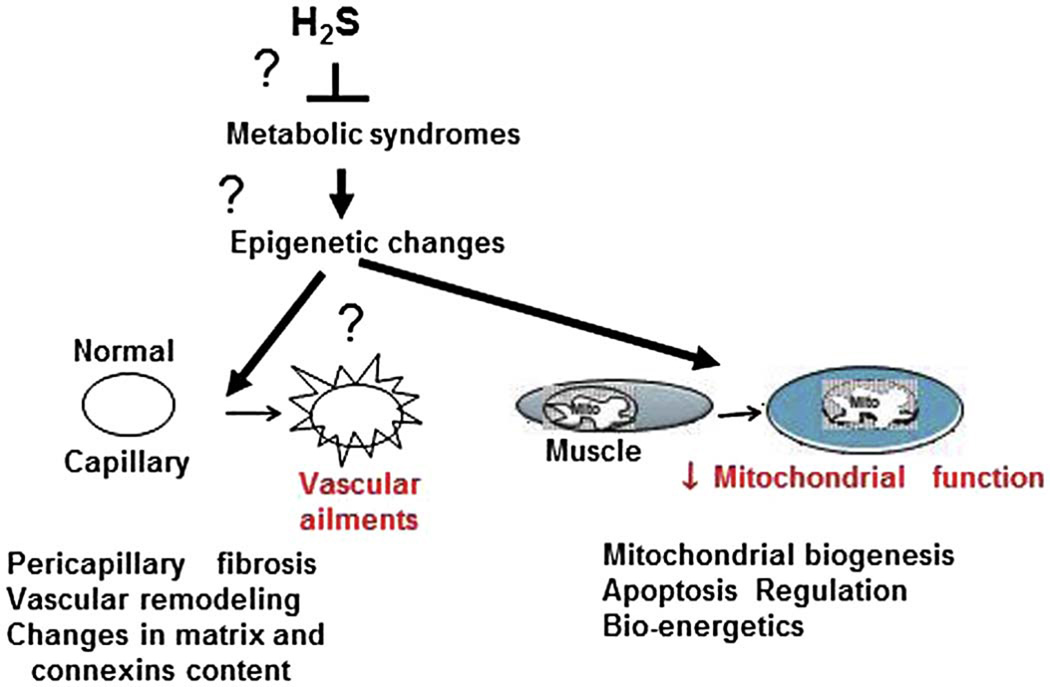Figure 2.
H2S mediated ATP generation in mitochondria. In this hypothetical model, H2S not only supply electrons but also serves as a source for protons. The yet to be fully characterized protein complex may function to supply electrons to quinines and also contribute to proton gradient necessary for ATP generation as a byproduct during H2S metabolism in mitochondria. The hypothetical protein functional unit most likely involves SQR complex proteins as well [40]. Both cytoplasmic and mitochondrial pool of sulfur containing compounds (such as cysteine) contributes to the H2S production by locally residing enzymes. Both oxygen ( during hypoxic cases) or other compounds as in anaerobes [75] (during hibernation or ischemia) might accept final electrons. Presence of H2S inhibits organic compound oxidation.

